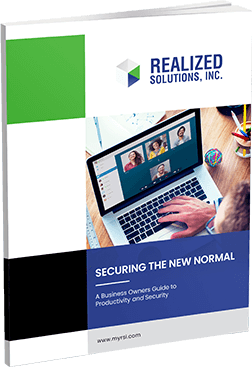RSI assists users who have reported their email accounts have been compromised and what the user can do in that situation to better protect themselves.
Here’s a quick emergency list of what to do if your account may have been compromised.
1. Stay Calm and Assess the Situation:
Discovering a compromised email account is very unsettling, but it’s important to remain calm and act quickly. Take a moment to gather your thoughts and assess the potential risks associated with the compromise. Evaluate the extent of the breach, such as unauthorized access or suspicious activity, before proceeding.
2. Change Your Password:
The first step in regaining control of your compromised email account is to change your password immediately. Create a strong, unique password that includes a combination of letters, numbers, and special characters. Avoid using easily guessable information such as your name, birthdate, or common words. Additionally, ensure that you update passwords for any other accounts that share the same or similar login credentials.
3. Enable Two-Factor Authentication (2FA):
Protect your email account further by enabling two-factor authentication (2FA). This adds an extra layer of security by requiring a secondary verification step, usually through a text message, app notification, or biometric authentication. By enabling 2FA, even if someone manages to obtain your password, they will still need the secondary verification to access your account.
4. Check Account Settings and Recovery Information:
Inspect your account settings to verify if any changes have been made without your knowledge. Review email forwarding settings, filter rules, or any other configurations that may have been modified by the unauthorized individual. Additionally, ensure that your recovery information, such as alternative email addresses and phone numbers, is up to date and secure.
5. Scan for Malware and Viruses:
Malware or viruses on your computer or mobile device can contribute to email compromises. Run a full system scan using reliable security software to detect and remove any potential threats. Regularly update your antivirus software to stay protected against the latest threats.
6. Monitor Your Account and Report Suspicious Activity:
After securing your compromised email account, remain vigilant and monitor it closely for any unusual or suspicious activity. Keep an eye on sent folders, deleted items, and forwarded emails. If you notice anything out of the ordinary, report it to your email service provider and consider notifying law enforcement, especially if you suspect identity theft or other illegal activities.
7. Inform Contacts and Be Wary of Phishing:
Notify your contacts about the compromised email account to ensure they don’t fall victim to phishing attempts or respond to fraudulent messages. Hackers might try to exploit your compromised account by sending malicious emails or requests for sensitive information to your contacts. Warn them about the situation and advise them to be cautious when receiving emails from your compromised account.
Discovering a compromised email account is distressing, but taking immediate action is crucial to mitigate the potential risks. By following the steps outlined, such as changing your password, enabling two-factor authentication, monitoring your account, and informing your contacts, you can regain control and restore the security of your email account. Remember, prevention is key, so adopt good cybersecurity practices, such as using strong passwords, regularly updating software, and staying informed about the latest threats, to minimize the chances of future compromises.




